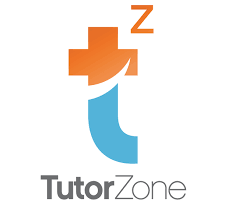ACT Course
During our one-on-one sessions with students, we begin with a simple assessment. We use the assessment in conjunction with their previous test results to identify the student’s areas of vulnerability; once we have identified these areas, then we begin instruction in these given topics.
English Section: 75 questions, 45 minutes
- This section tests a student’s ability to correct grammatical errors according to standard written English. It also measures a student’s rhetorical skills; that is, how to best express an idea, and how to maintain the author’s style and tone of a passage throughout the text.
- Grammar usage/mechanics questions are based on the following: subject-verb agreement, verb tenses, possessive pronouns, punctuation, redundancy, and syntax. Rhetorical skills questions are based on the following: diction, style, relevancy, loss of detail, logical progression of paragraphs, and purpose.
- Students will have a complete understanding of the material to correctly answer the multiple-choice questions by actively participating in discussions, improving their grammar usage and rhetorical skills, applying our strategies, and practicing numerous ACT questions.
One-on-one application: For example, if the student struggles with subject-verb agreement, then we work with them on deconstructing sentences by identifying components such as agents, verbs, and receivers. This deconstruction serves to understand the function of these components within a sentence and more readily identify an error; that is, if the subject is singular, then the verb must also be singular and so forth.
Reading Section: 40 questions, 35 minutes
- This section tests a student’s ability to fully comprehend the stated and implied meaning of social science, natural science, humanities, and literary narratives and prose fiction passages.
- Questions in this section require students to describe the narrator/speaker in the stories and to identify the main points of the passages – including supporting details. Students are also asked to reasonably infer conclusions based on the information given in the reading passages.
- With the use of various strategies, such as annotation, students will learn how to read efficiently and effectively. By better understanding the contents of the passages, students will be able to improve their reading comprehension and make logical inferences.
One-on-one application: Many students struggle to make logical inferences on implied meaning questions. Therefore, we dedicate ample amounts of time explaining how to derive implied meaning from texts. With the assistance of such acronyms as SOAPSTone, we work with the students on how to identify necessary elements of texts to guide their comprehension as they read and analyze within the confines of the questions and on how to use textual evidence to support their inferences.
Science Section: 40 questions, 35 minutes
- This section tests a student’s ability to interpret, analyze, and evaluate passages. Students must also be able to understand the reasoning behind scientific conclusions and have the ability to solve problems related to the natural sciences.
- Although the content of the Science test includes biology, chemistry, physics, and the Earth/space sciences, advanced knowledge in these subjects is not necessary. Instead, the test emphasizes fundamental scientific knowledge and reasoning skills. Questions in this section require students to critically examine the relationship between the given information and the conclusions/hypotheses that are developed from it.
- Similar to the reading section, students will improve their reading comprehension and analysis of conflicting viewpoints with the use of various strategies. Moreover, students will learn how to interpret scientific data that is presented in graphic and tabular material.
One-on-one application: Often, scientific figure interpretation alarms students because they assume that they need a breadth of background knowledge to answer the questions correctly and because they fear its seeming complexity; however, both notions are false. We work with the students to utilize acronyms, such as OPTIC, to guide their analysis of such figures. We show them how to analyze figures and data within the limitations of the questions to eradicate their stigma.
Optional Writing Test: 1 prompt, 40 minutes
- This section tests a student’s ability to evaluate and analyze arguments, state and develop their own perspective on an issue, and explain the relationship between their own perspective and those given.
- In order to receive the highest possible score, students must provide a context in which to analyze the different perspectives and provide textual evidence to support their own conclusion. The essay must be well organized and have proper transitions between paragraphs that serve to clarify and strengthen the writer’s reasoning. Students must also demonstrate proficiency in the English language by using proper sentence structure and word choice.
- Students will improve their writing skills by learning how to properly structure their essay response and support their ideas with logical reasoning and detailed, persuasive examples.
One-on-one application: Our instruction in the Writing Test is our opportunity to synthesize what we have discussed with the student in the English and Reading Tests. Typically reserved for our last instructional topic, we require the students to draw from their knowledge in reading comprehension to annotate each presented argument and we require the students to draw from their knowledge in standard written English as they construct their essay. Students must explicitly understand the relationship between the English, Reading, and Writing Tests to perform well.
